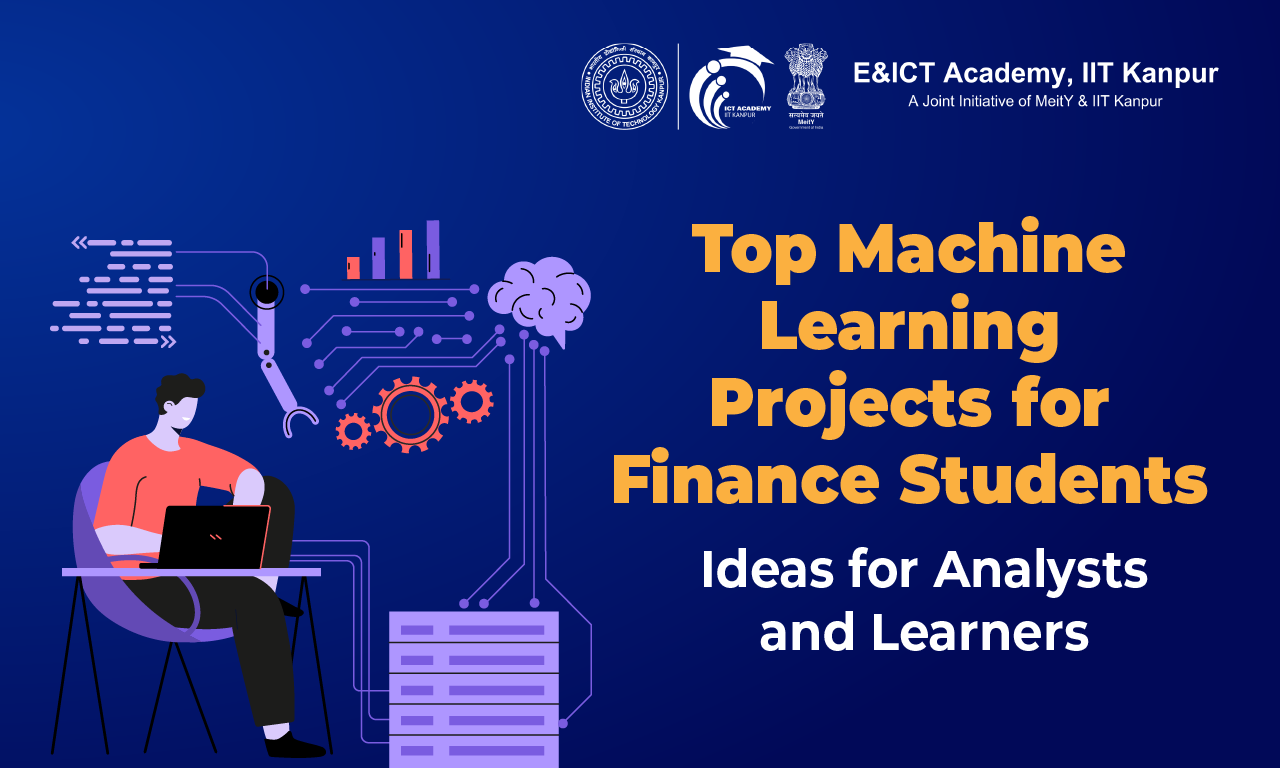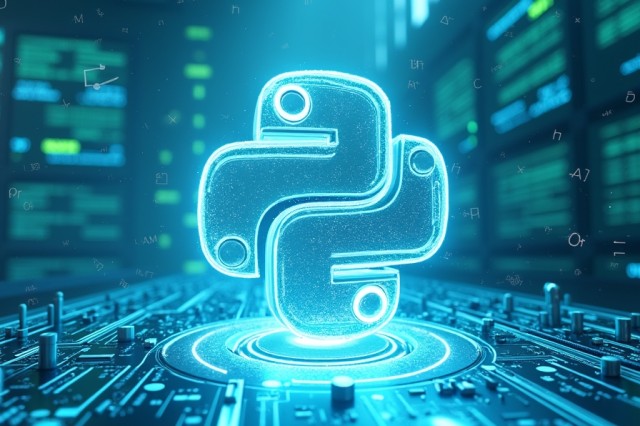Top Machine Learning Projects for Finance Students & Analysts

In our data-driven economy, finance is no longer about number crunching. Instead, it’s about deriving insights from intricate patterns. As the world of finance becomes more dependent on predictive analytics, algorithmic approaches, and instant decision-making, machine learning (ML) is becoming a fundamental ability.
For finance students and analysts, getting hands-on with machine learning projects isn’t just a way to boost your resume. It’s a direct path to understanding the systems shaping the future of banking, investment, compliance, and risk management.
Whether you want to work at a hedge fund, fintech startup, or global bank, mastering these tools can give you an edge in both interviews and real-world problem-solving.
The following curated project ideas offer immersive learning experiences drawn directly from real financial use cases. Each one is designed to teach practical, job-ready skills while deepening your understanding of how data and finance intersect.
Why ML Projects Matter in Finance?
Prior to delving into project details, it is helpful to grasp why ML is so important today in finance:
- Volume and rate of data: Contemporary markets produce enormous quantities of structured and unstructured data, such as news stories, transactions, sentiment, and portfolio valuations.
- Automation and precision: ML models minimize manual effort in data cleansing, credit scoring, and compliance monitoring processes.
- Competitive edge: From fintech startups to multinational hedge funds, multiple companies leverage ML to enhance portfolios, uncover fraud, and optimize advisory services.
Level Up Your Finance Career with These ML Project Ideas
Finance today is driven less by manual analysis and more by insights from complex data patterns. As predictive analytics and real-time decision-making take center stage, machine learning (ML) is becoming essential for finance professionals.
For students and analysts, applying ML to real financial problems builds both skill and credibility. The following project ideas offer practical, resume-ready experience rooted in real-world use cases – ideal for anyone aiming to stand out in the world of banking, fintech, or investment.
1. Credit Risk Classification with Real‑World Banking Data
Overview: Develop a supervised classification model to forecast credit default risk from a dense dataset (e.g., loan characteristics, credit scores, payment history).
Why is it Essential: This replicates the every day of a bank credit risk analyst. Logistic regression and ensemble techniques are central here.
Skills acquired:
- Data cleaning & handling of class imbalance
- Score binning and feature engineering
- Precision-recall analysis, ROC-AUC
- ML outputs deployable in credit processes
2. Time‑Series Forecasting & Portfolio Optimization
Overview: Predict asset returns (such as indices or FX) using models like ARIMA, LSTM, or XGBoost, followed by building an optimized portfolio via ML-informed techniques.
Why it matters: Portfolio construction is the essence of investment choice. ML tools are enhancing the way we invest and take risks.
Skills acquired:
- Rolling averages, lag features, momentum analysis
- Backtesting with Sharpe ratio and drawdown metrics
- ML vs traditional model comparison
- Asset weighting with Hierarchical Risk Parity
3. Fraud Detection in Payment Systems
Overview: Train models on transaction data to identify suspicious behaviour, particularly credit card fraud, while minimizing false alarms.
Why it matters: Billions are lost to fraud. This project creates a model that detects it quickly without raising flags about good behaviour.
Skills acquired:
- Handling high-cardinality features
- Anomaly detection using Isolation Forest or Autoencoders
- Low false positive optimized evaluation
- Real-time scoring and notifications
4. Sentiment-Treasury Analysis of Financial News
Overview: Extract sentiment from financial news using NLP, then quantify its effect on bond yields or stock price.
Why it matters: Traders pay close attention to sentiment. ML makes quantifying it and foreseeing reactions to the market possible.
Skills acquired:
- Scraping and processing text financial
- BERT-based models and word embeddings
- Correlation with price data
- Time-sensitive signal generation
5. Automated Trading Agent using Reinforcement Learning
Overview: Train an RL agent to trade in simulated markets, deciding when to buy, sell, or hold assets.
Why it's important: Automated trading is making progress. RL provides models with the capacity to discover optimal strategies using trial and error.
Skill acquired:
- Setup of market simulation
- Reward functions and training agents with PPO/DDPG
- Trading logic with risk constraints
- Backtesting in various volatility scenarios
6. Customer Lifetime Value (CLV) for Financial Products prediction
Overview: Construct a regression model to predict a customer’s long-term worth based on their behavior, transactions, and demographics.
Why it matters: Insurers and banks must know who to invest in. ML sharpens this forecast.
Skills acquired:
- Survival modeling and regression
- Feature engineering from time-stamped data
- Cohort analysis
- Integration into product marketing and CRM systems
7. Synthetic Data Generation for Risk Simulations
Overview: Employ GANs or Variational Autoencoders to generate financial data when there are limited or sensitive historical records.
Why it matters: Synthetic data lets risk teams stress-test portfolios or simulate rare events without the constraints of actual data.
Skills acquired:
- Conditional data generation
- Synthetic vs original distribution evaluation
- Application to Value-at-Risk and scenario testing
- Preservation of privacy during model development
8. Payroll and Invoice Anomaly Detection
Overview: Detect outliers in internal accounting records such as payroll, invoices, or reimbursements using unsupervised ML.
Why it matters: Manual errors in data entry and internal fraud are significant to overlook. The models serve as an early-warning system.
Skills acquired:
- Clustering and outlier detection techniques
- Threshold adjustment and alert mechanisms
- Finance audits with visual dashboards
- Enterprise workflow datasets in LLMs
9. Earnings Call Summarization using Generative AI
Overview: Utilize LLMs to summarize long earnings transcripts to bullet-point insights or structured summaries.
Why it matters: Analysts require quicker ways to absorb quarterly reports. AI summaries accelerate decision-making.
Skills acquired:
- Refining summarization models
- Handling long-form text
- Formatting structured output
- Implementing a summarization API or tool
Career‑Ready Outcomes
Upon completing these projects, learners acquire:
- Domain knowledge: Credit scoring, market forecasting, fraud detection, sentiment modeling, and auto-trading
- Hands-on technical proficiency: Regression, time-series forecasting, NLP, RL, anomaly detection, and deep learning
- End-to-end project experience: From raw data to cloud-deployed solutions
- Communication skill: Translating technical work into insights to stakeholders
Students and analysts who complete these real-world projects develop robust portfolios and become confident in speaking the language of finance and technology, making them shine in interviews and on the job.
Final Thoughts
Finance is evolving rapidly, and the individuals who can develop, translate, and implement ML models will be leading the charge. From fraud analysis to forecasting, EICTA practical projects bridge the gap between classroom theory and practical outcomes.
Whatever your goal in quant research, financial analytics, or AI-based investing, these projects will provide the traction to get you noticed and landed.
Recommended Courses

Advanced Certificate Program in AI for Leaders

AI & Digital Transformation

AI for Managers

AI for Managers

Artificial Intelligence

Data Analytics using AI

Deep Learning with Generative AI for Computer Vision

Generative AI

Generative AI Course

Machine Learning with Python

Professional Certificate Course in Generative AI and Machine Learning

Professional Certificate Program in Leadership with AI



